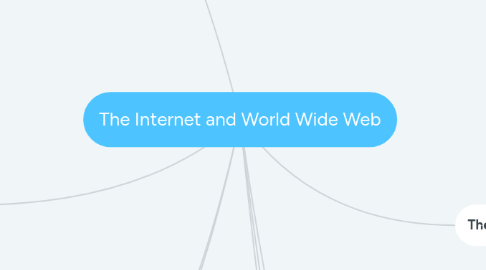
1. Evolution of the Internet
1.1. The Internet originated as ARPANET in September 1969 and had two main goals
1.1.1. Allow scientists at different physical lacations to share information and word together
1.1.2. Function even if part of the network were disabled or destroyed by a disaster
1.2. Each organization is responsible only for maintaining its own network
1.2.1. The World Wide Web Consortium (W3C)
1.3. Internet2 connects more than 200 universities and 115 companies via a high-speed private network
1.4. Many home and small business users connect to the Internet via high-speed broadband Internet service
1.5. An access provider is a business that provides individuals and organizations access to the Internet free or for a fee
1.6. ISP (Internet service provider)
1.6.1. access to a specific geographical area
1.6.2. access in cities and towns nationwide
1.7. Online service provider (OSP)
1.7.1. Has many members-only features
1.8. Wireless Internet service provider (WISP)
1.8.1. access to computers and mobile devices
1.9. IP address
1.10. Domain name
1.11. DNS server
2. Other Internet Services
2.1. E-mail
2.2. E-mail program
2.3. Instant messaging (IM)
2.4. Chat
2.5. Chat Room
2.6. VoIP (Voice over IP)
2.7. Newsgroup
2.8. Message board
2.9. FTP (File Transfer Protocol)
3. Netiquette
3.1. is the code of acceptable Internet behavior
4. Summary
4.1. History and structure of the Internet
4.2. World Wide Web
4.3. Browsing, navigating, searching, Web publishing, and
4.4. e-commerce
4.5. Other Internet services: e-mail, instant messaging, chat rooms, VoIP, newsgroups and message boards, and FTP
4.6. Rules of netiquette
5. The World Wide Web
5.1. Consists of a worldwide collection of electronic documents
5.2. Web site is a collection of related Web pages and associated items
5.3. Web server is a computer that delivers requested Web pages to your computer
5.4. Web 2.0 refers to Web sites that provide a means for users to interact
5.5. Differences between Web 1.0,2.0 & 3.0
5.5.1. Web 1.0
5.5.1.1. all about read-only content and static HTML websites.
5.5.2. Web 2.0
5.5.2.1. user-generated content and the read-write web.
5.5.3. Web 3.0
5.5.3.1. about semantic web (or the meaning of data), personalization (e.g. iGoogle), intelligent search and behavioral advertising among other things.
5.6. A Web browser, or browser, allows users to access Web pages and Web 2.0 programs
5.7. A Web page has a unique address called a URL or Web address
5.8. Tabbed browsing allows you to open and view multiple Web pages in a single Web browser window
5.9. Two types of search tools are search engines and subject directories
5.9.1. Search engine
5.9.1.1. Finds information related to a specific topic
5.9.2. Subject directory
5.9.2.1. Classifies Web pages in an organized set of categories
5.10. Some Web browsers contain an Instant Search box to eliminate the steps of displaying the search engine’s Web page prior to entering the search text
5.11. Search operators can help to refine your search
5.12. Information presented on the Web must be evaluated for accuracy
5.13. Multimedia refers to any application that combines text with graphic, animation, audio, video and virtual reality
5.14. A plug-in is a program that extends the capability of a Web browser
5.15. Web publishing is the development and maintenance of Web pages
6. E-Commerce
6.1. B2B
6.1.1. Is the buying and selling of product or services over electronic systems such as the Internet and other computer networks
6.2. B2C
6.3. C2C
7. M-Commerce
7.1. Is the ability to conduct commerce using a mobile device
8. L-Commerce
8.1. Is the practice of using technologies which provide location information, such as GPS, for business purposes.
8.1.1. allow cellphone users to find the nearest restaurant to their current location

